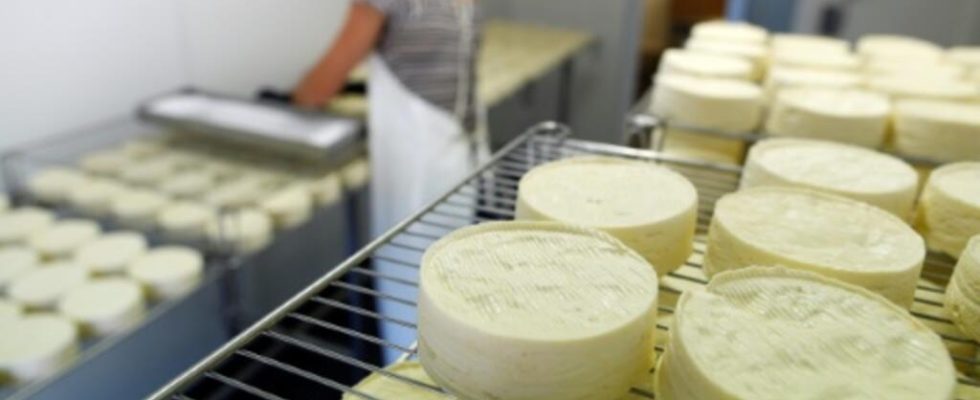Researchers from the National Center for Scientific Research (CNRS) warn: France, the country of cheese, could lose these cultural and culinary symbols.
3 mins
To make cheese, you need micro-organisms, which transform the milk. Like others, Camembert is then refined using a microscopic fungus.
Camembert, ” wherever it is manufactured on Earth, is inoculated with a single strain of fungus »: the aptly named Penicillium camemberti, explains the CNRS. “ This strain is a white mutant selected in 1898 to inoculate Bries and then Camemberts from 1902. Until the 1950s, Camemberts still had gray, green or sometimes orange mold on their surface. » Not really appetizing according to manufacturers who, to sell more, have bet everything on a strain of albino Penicillium camemberti. It is she who makes this characteristic white and slightly fluffy crust on the surface of the cheese.
From generation to generation, the DNA of the fungus has undergone small alterations, natural mutations. Except that without genetic mixing, that is to say without mixing with other strains of Penicillium camemberti, “ the lineage ended up degenerating “. “ The strain is now so depleted that it has become almost infertile “. Cheesemakers are now having a hard time producing enough, according to researchers.
Genetic mixing
There is certainly an AOP Camembert de Normandie, a protected designation of origin, which guarantees the name of the product and typical manufacturing in the entire European Union. Except that for Camembert, it is the AOP which requires the use of this unique strain which has become almost sterile.
So what can we do to save this symbol of French terroir? Several possibilities in theory. The first one : ” return to the wild population of Penicillium camemberti and restart the long process of domesticationn,” says the CNRS. Because yes, we domesticate micro-organisms, in the same way as dogs or cats.
“ We could also imagine using genome editing techniques “, that is to say, making a GMO mushroom capable of regaining its ability to reproduce. But for CNRS researchers, this is not a solution, because a GMO is just another form of selection for unique particularities, or “ it is the diversity brought by reproduction with different individuals that we need today », Estimate the scientists. In short, a tribute to crossbreeding. There are indeed other similar species, notably Penicillium biforme, but we will have to accept that the taste, texture and color of the Camembert will change.
Danger for Roquefort
In addition to Bries and Camemberts, the situation of blue-veined cheeses, blues and other Roqueforts, is also critical. It’s the same scenario, but it seems less serious. Firstly because there is not just one, but two strains of mushrooms used for bruises: Penicillium roqueforti.
If the first population, the most widespread, is indeed exhausted. The second, used for the AOP Roquefort, is better protected and remains quite diversified. Scientists are also banking on a recent discovery: a third previously unknown strain and “ present in a confidential cheese: Termignon blue, made in a handful of farms in the French Alps “. By combining it with depleted strains, it could revitalize them and save the blue cheese industry, according to the CNRS.
